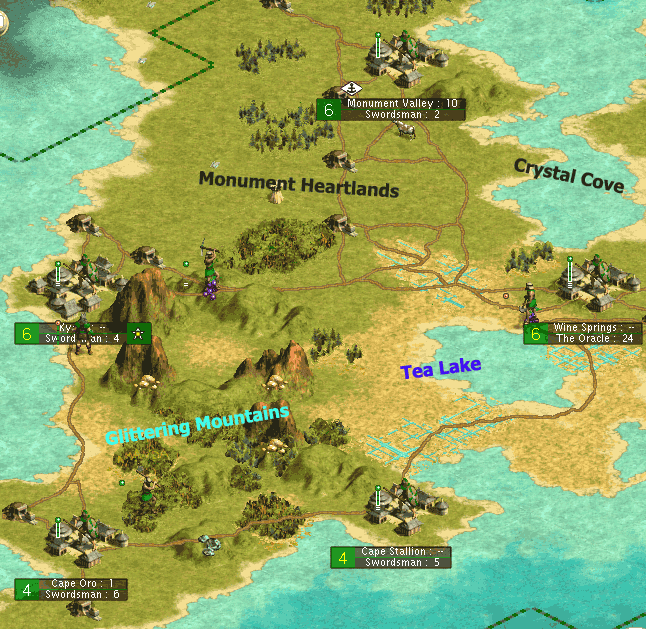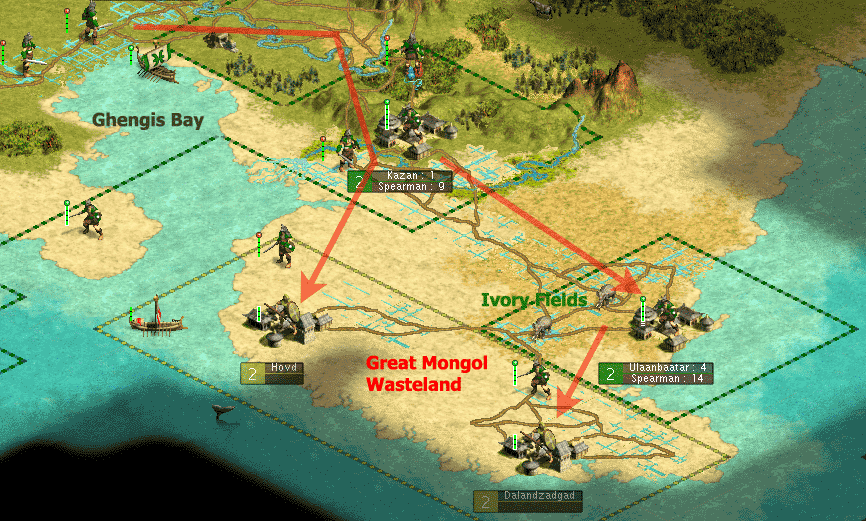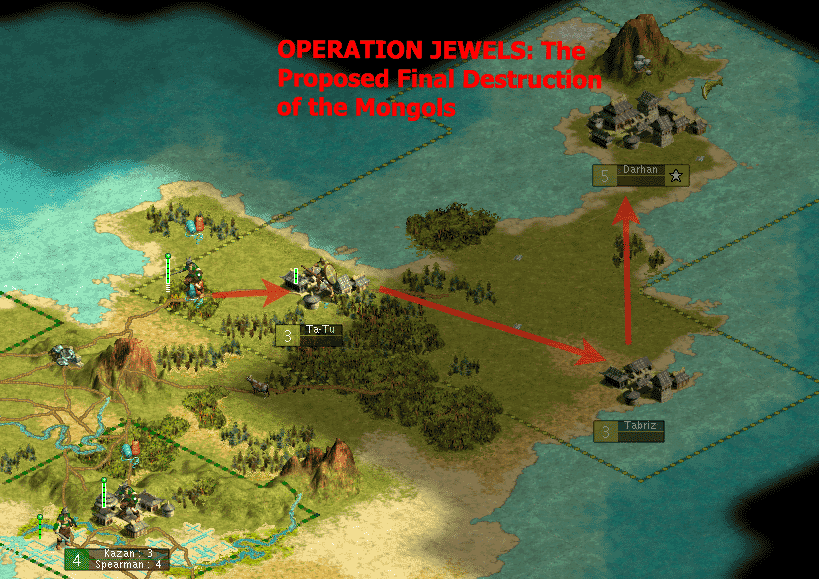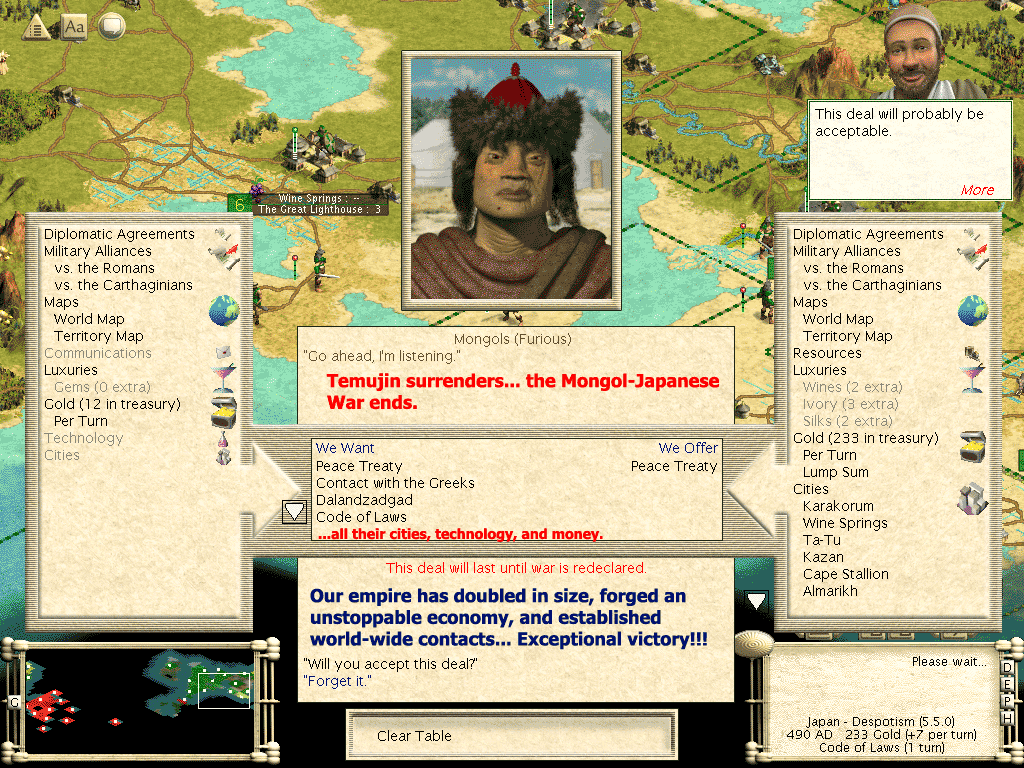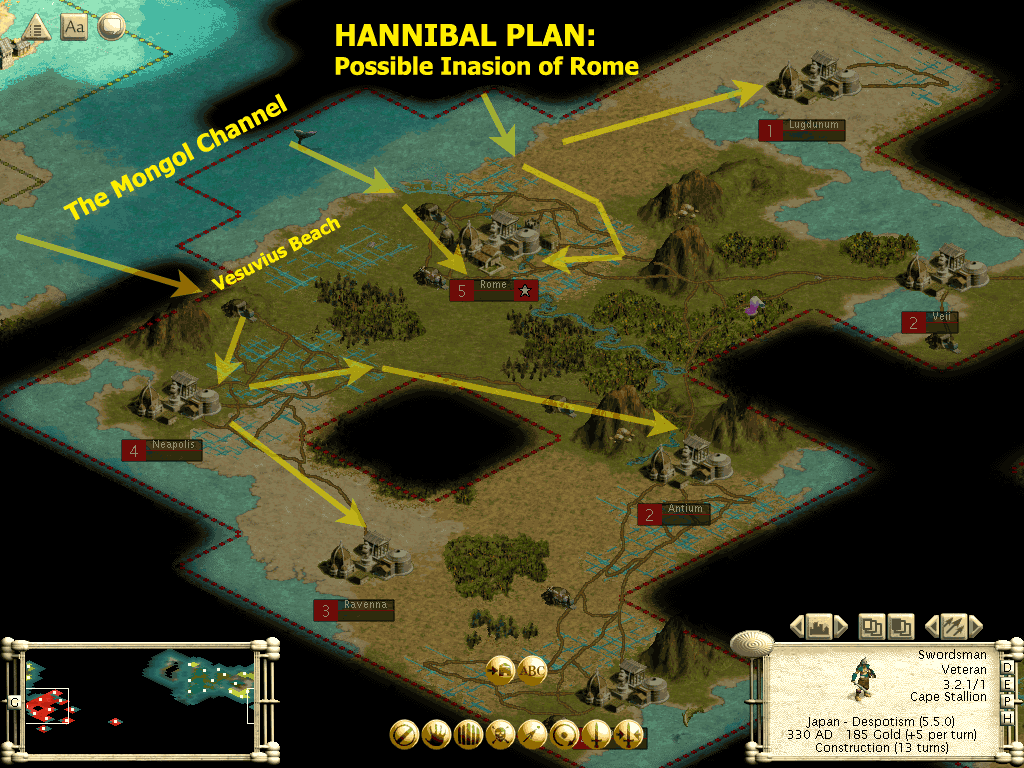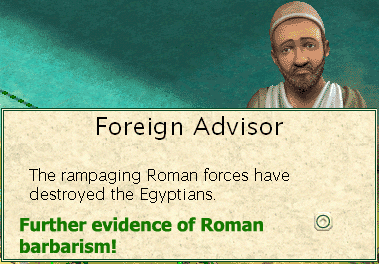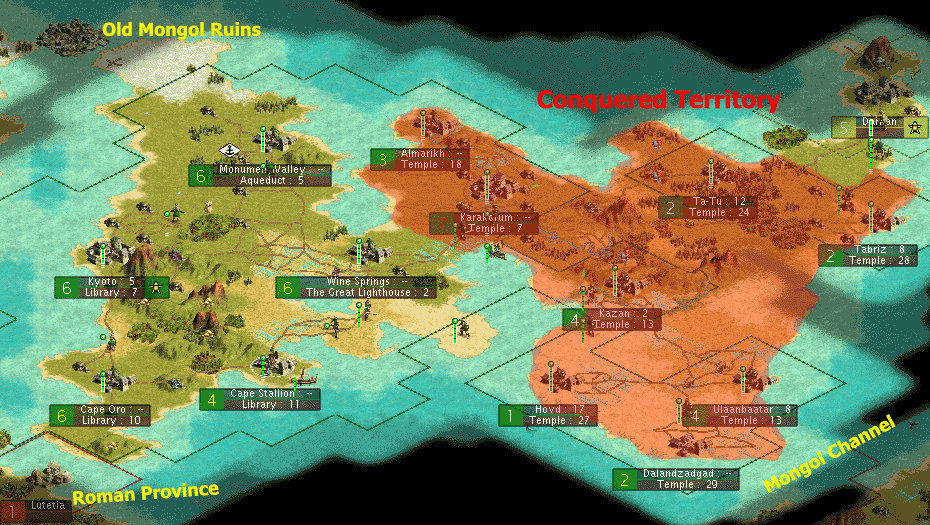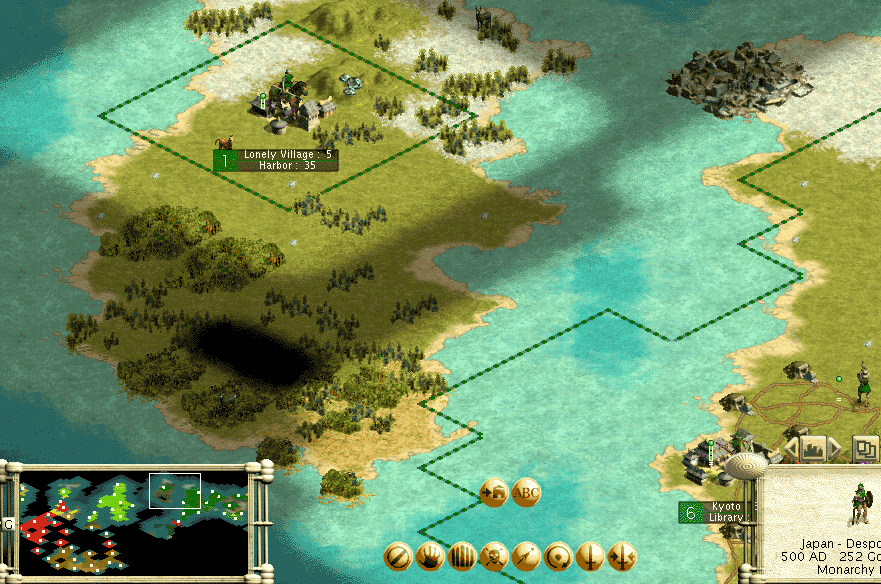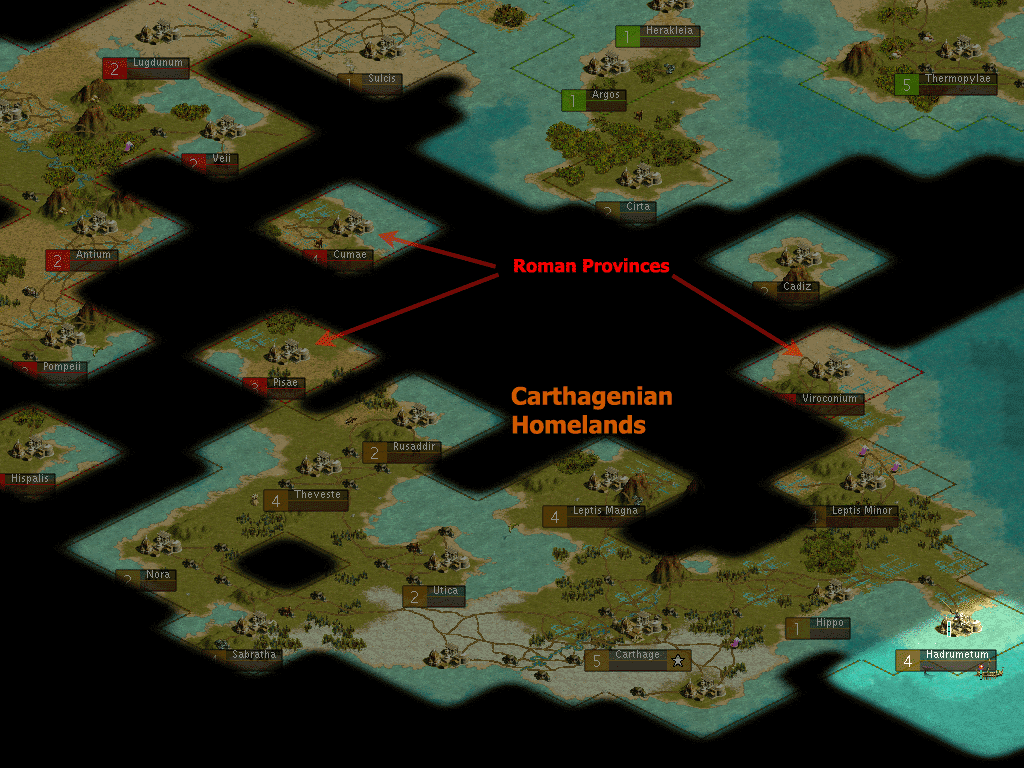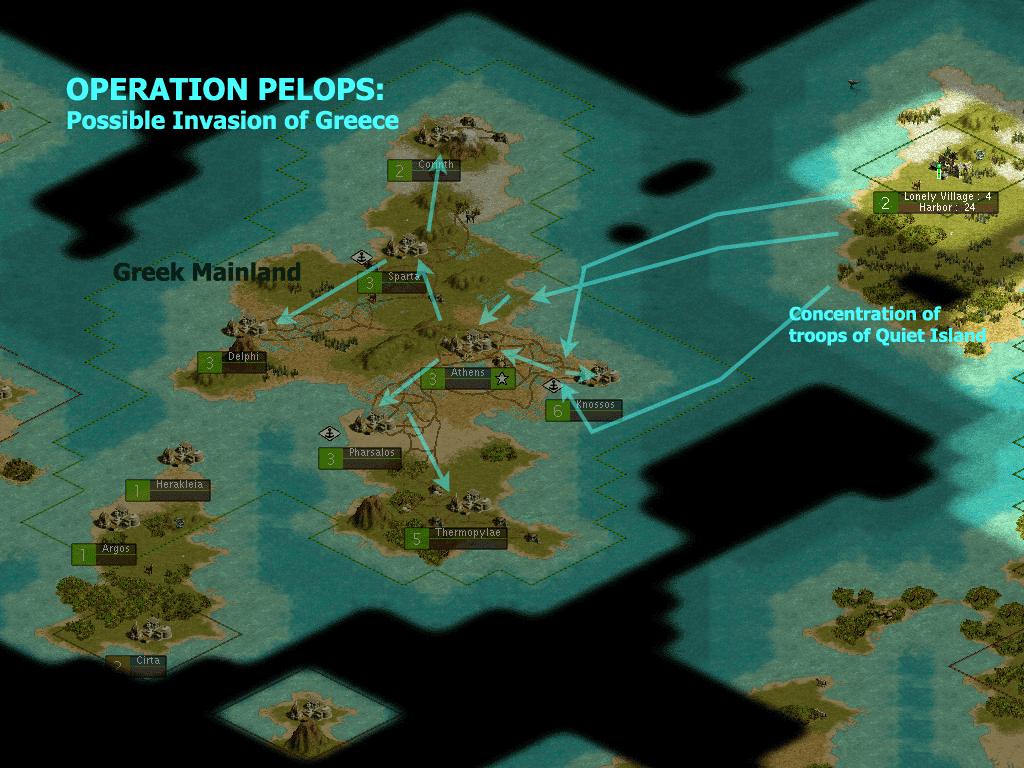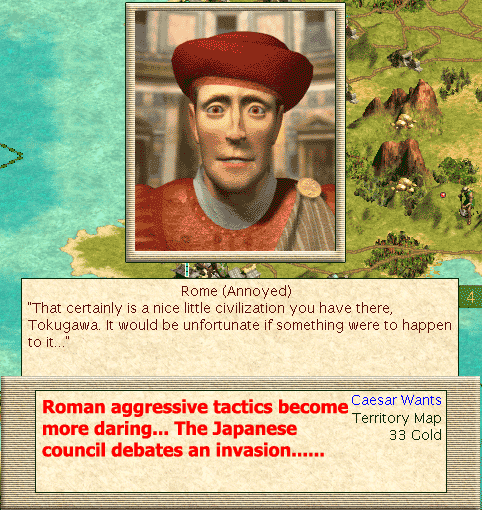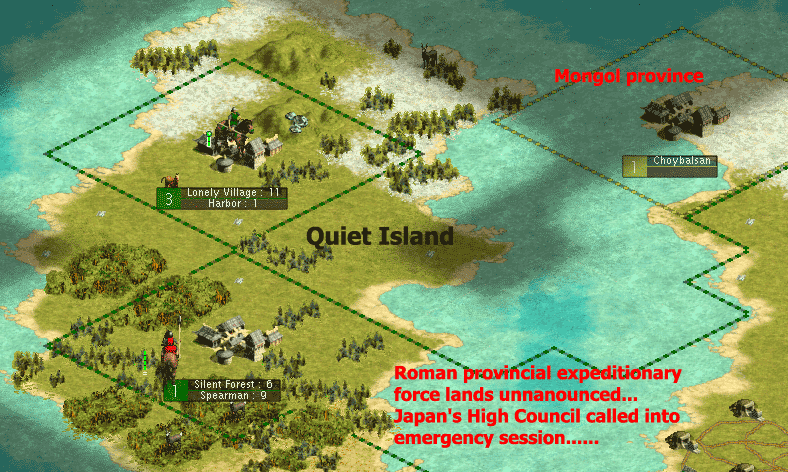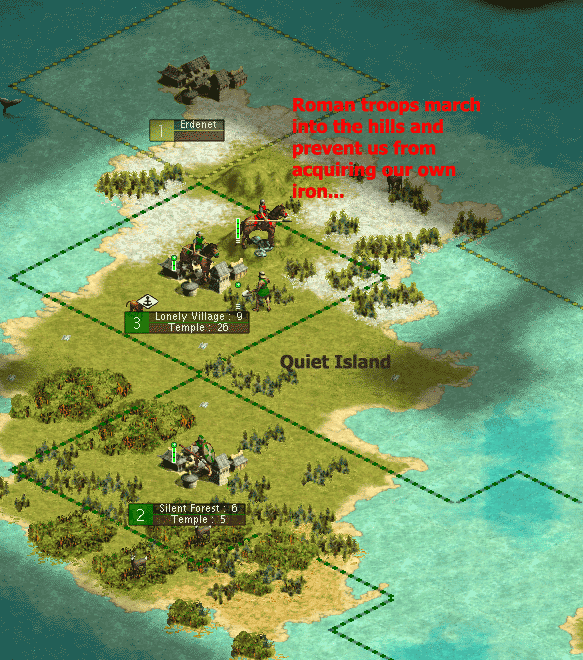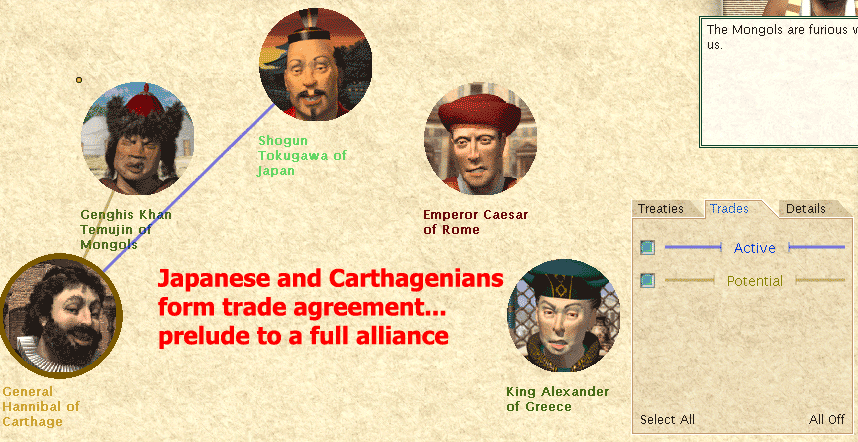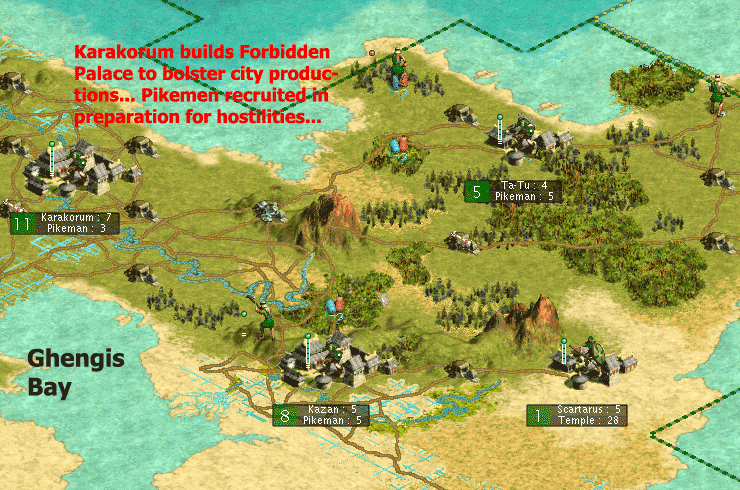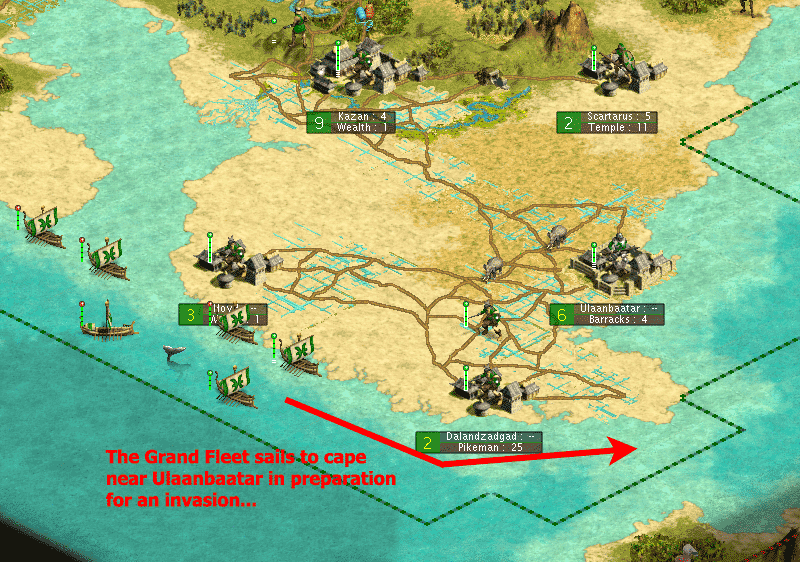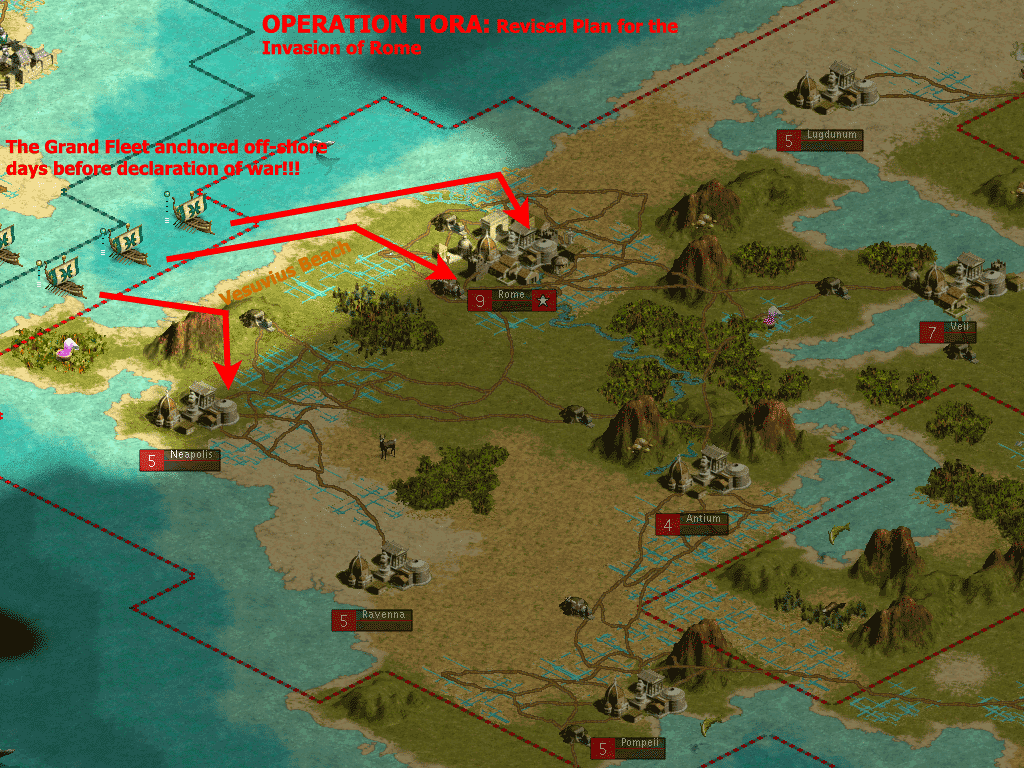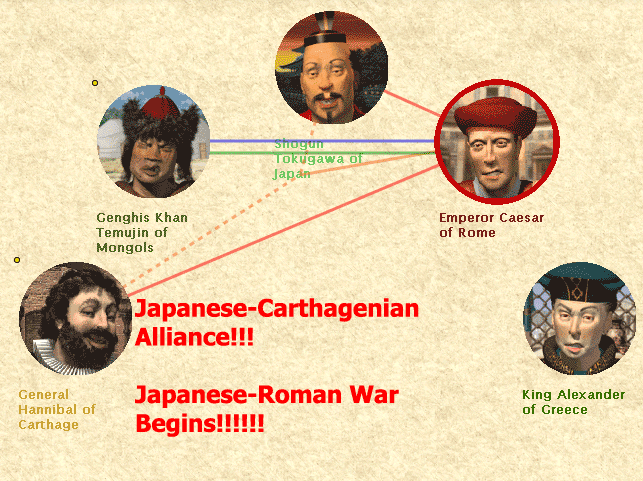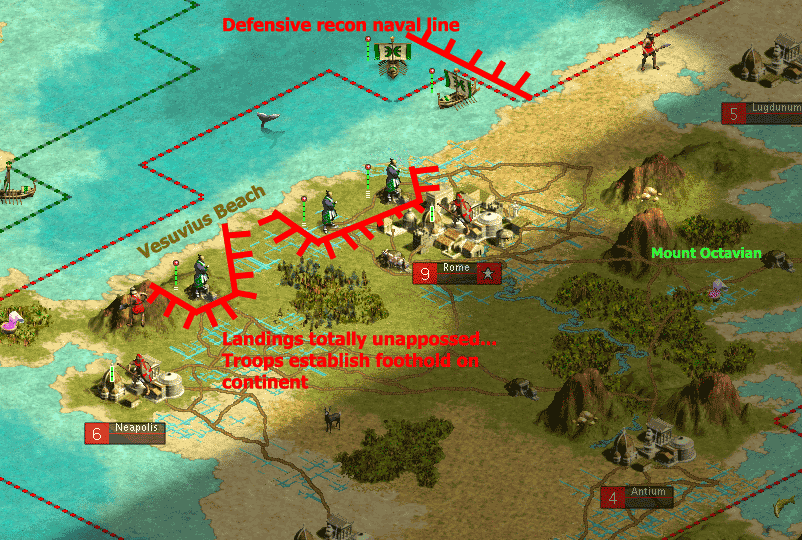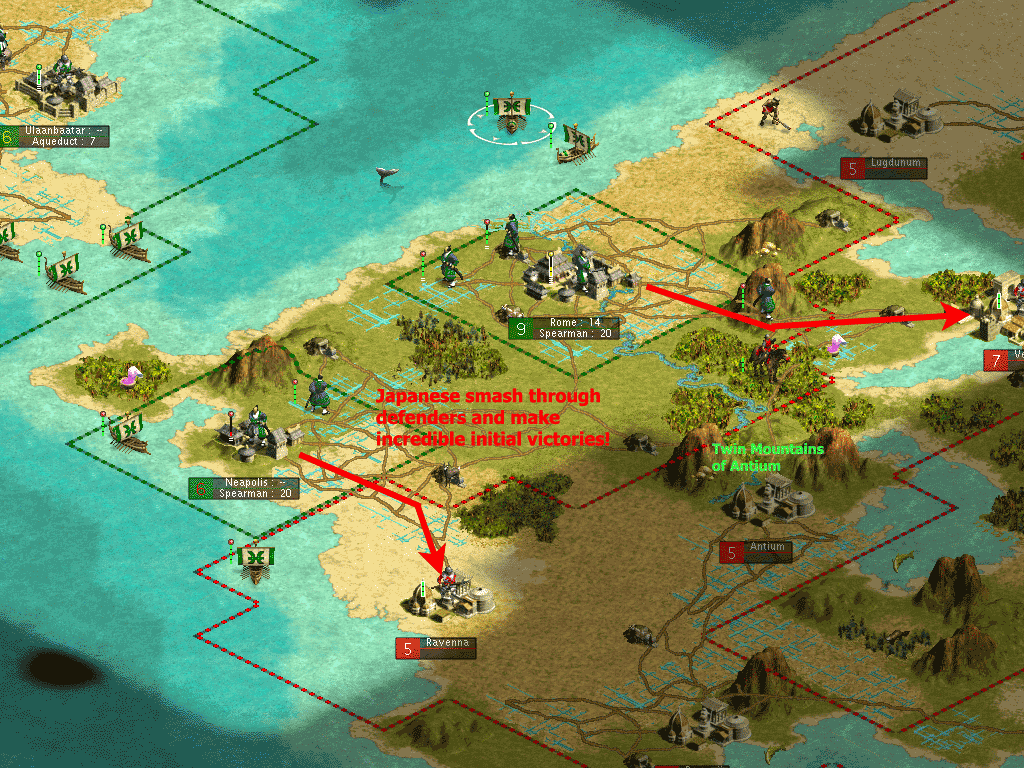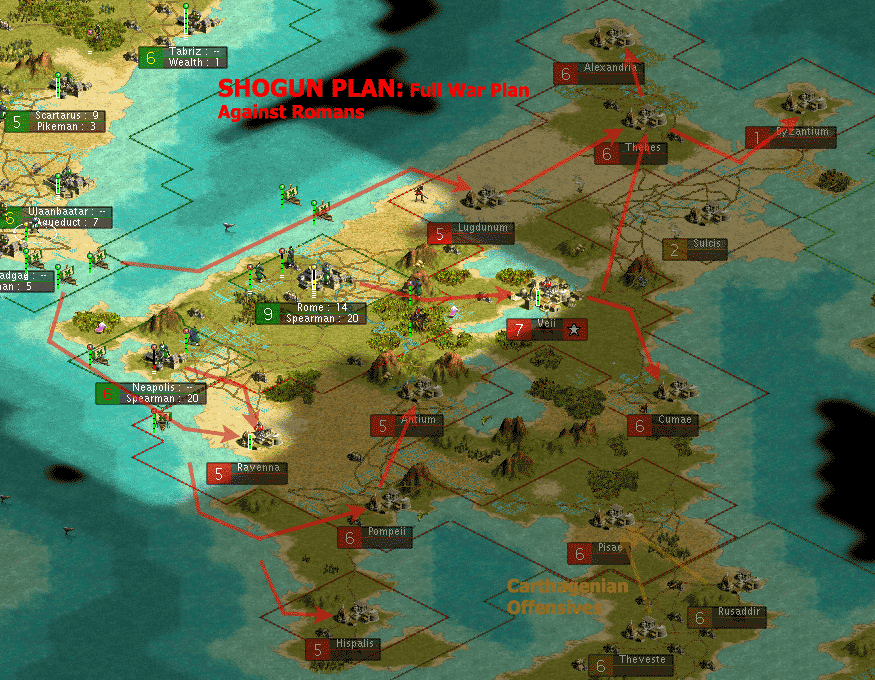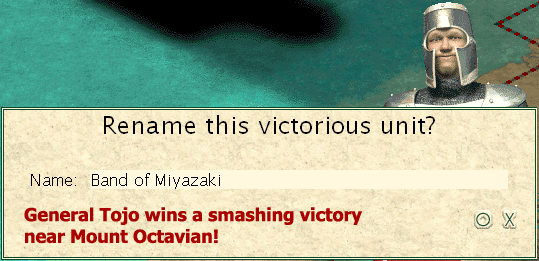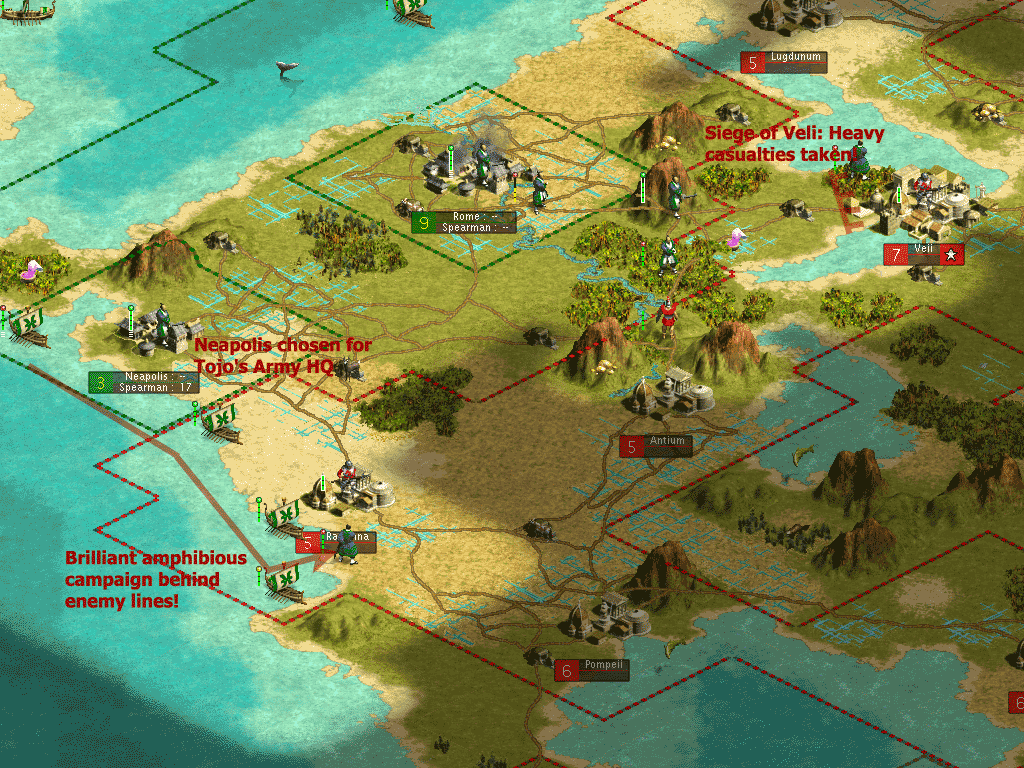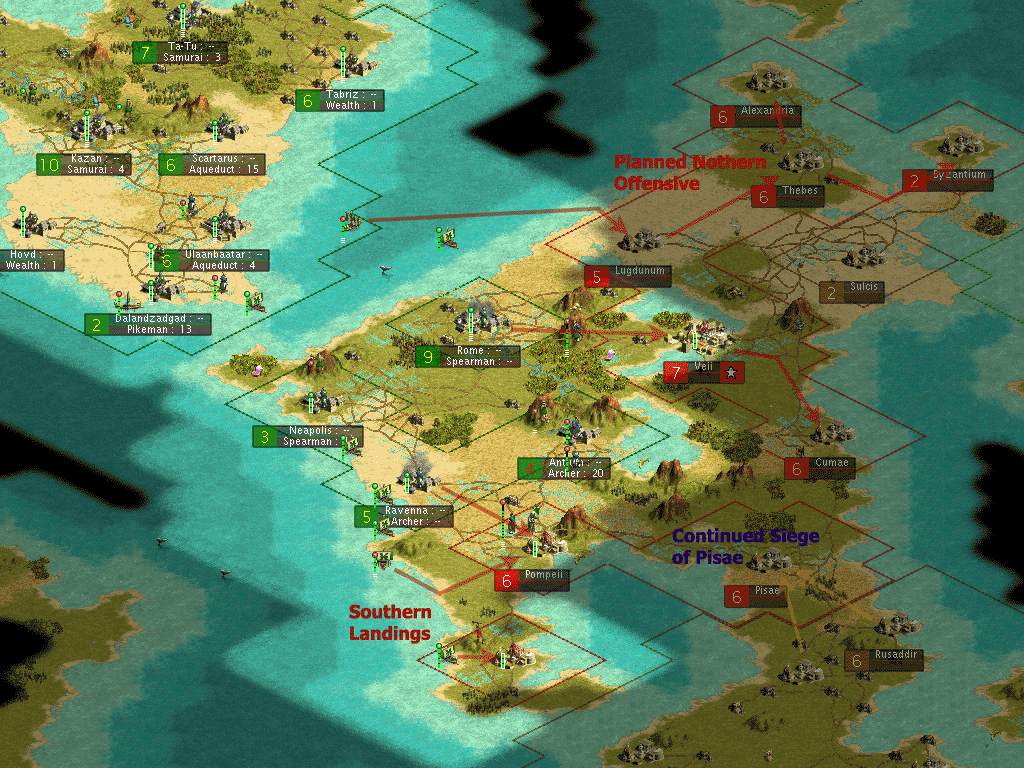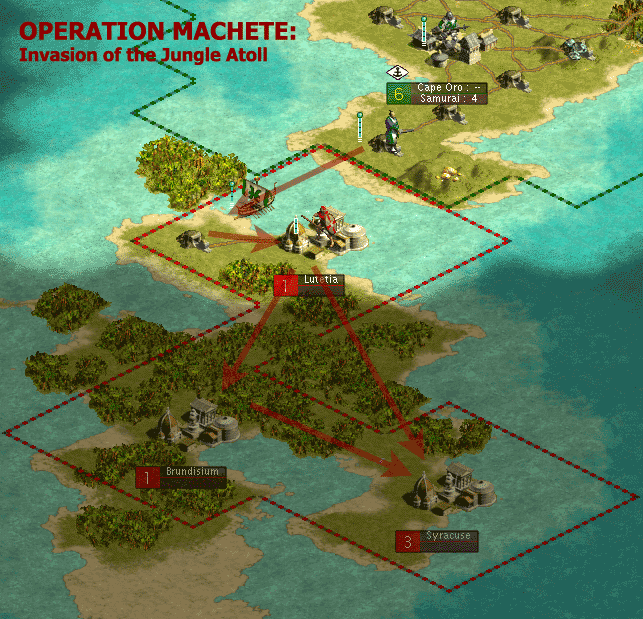Karakorum approached on the horizon as Tojos men marched through the empty countryside. So far, none of the six regiments had run into any organized resistance. Even when the Japanese were within earshot of the city limits, no Mongolian force appeared to attack. Instead, they had seemingly walked unopposed into the Mongolian heartland. The first regiments attacked Karakorum full-force. The unprepared garrison of the capital quickly crumbled and the Japanese flag flew over the first foreign city in history. Temujin quickly fled before Japanese troops made their way to his palace and arrived a few days later, dismayed and distraught, at his capital-in-exile, Kazan, further east of Karakorum.
Meanwhile, at Karakorum, the Japanese reorganized to carry the battle to Almarikh, a small sea-side village north of the city. The resistance there was stronger than at the Mongol capital, but the swordsmen broke through, sustaining moderate casualties. With these victories, a flurry of young men appeared at Japanese recruitment stations to enlist in what was becoming a very respectable force.
Temujin finally regained his senses after the fall of Almarikh and prepared a counteroffensive to take back his original capital. Before he was able to throw his army into action however, Tojo and supporting regiments appeared at Kazans doorstep and besieged the city. Temujin barely escaped and made his way farther north to the distant city of Darhan. As he scurried away, the noble Mongolian spearmen held their positions at Kazan and threw back several Japanese regiments. Finally, however, Tojo broke through and smashed the enemy lines, capturing the critical city. Now the Mongolian Empire was split into northern and southern areas.
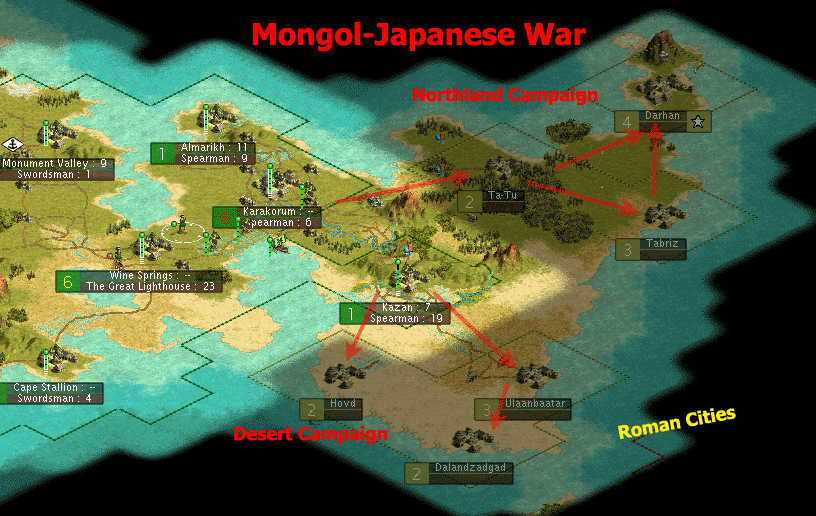
Due to the heavy casualties taken at Kazan, Tojo and the rest of the troops were temporarily unable to carry the attack any further. Before the Japanese could organize another offensive, however, the Mongolian army finally emerged charging west of Ta-Tu. They enemy swordsmen and spearmen troops thundered out of the thickly wooded area of Ta-Tu, the fabled silk city of the east, and headed straight for Karakorum, threatening to cut of Kazan.
Japanese response was swift, but indecisive. Instead of fighting a defensive war, new swordsmen units were ordered to attack the incoming enemy before they reached the city. A few initial victories were made, but the Japanese force was too small to overcome the heavy offensive and were overrun. In the subsequent weeks, Japanese troops battled fiercely with the Mongols outside Karakorum. Although there was no decisive victory that smashed the enemy, eventually the unshaken Japanese economy produced enough weaponry and soldiers to overcome the Mongol threat and wear away the offensive thrust.
Meanwhile, Tojo had resupplied his troops and recovered his numbers enough to begin preparations for another offensive. Japanese generals had developed a twin strategy to finish the Mongols off. The first was a northland campaign to capture Ta-Tu and Tabriz, on the eastern coast, before launching an all-out attack on Darhan. The second was a desert campaign to the south to capture Hovd, Ulaanbaatar, and Dalandzadgad. Tojo chose the southern campaign and saw Ulaanbaatar as the primary objective. With reinforcements fresh from Japan, he marched to the coast city of Ulaanbaatar and the much-desired Ivory Fields. He captured the city with little problem and moved into the desolate Great Mongol Wasteland, an empty sandstorm-ridden desert, to capture the remaining towns.
In the north, a wave of crack units fresh from battles around Karakorum crossed the iron-rich hills separating the former Mongol capital and Ta-Tu. They converged in a wooded sector on the outskirts and waited
KYOTO ROYAL PALACE
All right general, Tokugawa said in his palace conference room. Show me what you have.
Yes, sir, General Noguma, Chairman of the Chiefs of Staff responded, unfurling a map. In bold letters at the top was written OPERATION JEWELS.
So whats this?
Our newest plan for the final phase of the war. Intelligence reports Temujins offensive reserves have all but been destroyed. The only troops left are the city guards and some defensive regiments, starving and demoralized. JEWELS is our final strike to capture Darhan. Our men at Ta-Tu will smash the defenders there and take the coastal outpost of Tabriz before making a concentrated march to the Darhan pass.
Sounds good, general. Give the order. Full attack. By the way
hows Colonel Tojo doing in the desert?
ULAANBAATAR ARMY HQ
Reports back from the front, colonel, Tojos executive officer explained as he handed him the message.
Read it, Tojo said, anxious to know what happened.
Hovd is secure. Regiments have suffered strong casualties from fanatic defenders and desert. Many soldiers have died of exhaustion in the sand. Cannot push on toward Dalandzadgad.
And our task force at Dalandzadgad?
Cannot penetrate lines. Desert and defenders have overwhelmed us. We need to withdraw to reorganize our lines.
Damn! Get them back here. Well regroup and reinforce for another strike.
Colonel Tojo had become division commander after his victory at Ulaanbaatar. He now commanded three separate regiments and reserves. As soon as his battle-weary troops had recovered and been reinforced, Tojo would prepare for the final assault on the lone city. In the north, Tabriz was besieged and the army awaited Nogumas order to finish it off
KYOTO ROYAL PALACE
A finely dressed officer entered the palace with a two-man escort by his side. His uniform drew cautious and curious glances, as everyone realized it was Mongol. He proceeded to the diplomatic room Tokugawa had set up for negotiations. Before he even entered, he knew there would be no negotiations. In his hand he held documents authorized by Temujin and all generals to unconditionally surrender.
General, Tokugawa said dryly, wanting to get rid of the officer as fast as he could. Sit.
Thank you, emperor, the man said, with a tired expression and drooped shoulders. Our Army Chiefs and Lord Temujin present you with this, he gave Tokugawa the papers, our unconditional surrender. We surrender all our forces, technologies, gold, diplomatic contacts, and remaining cities to you. We please ask that you take them and leave us in peace.
Tokugawa browsed the declaration and nodded. Thank you, general. We accept the terms and leave you Darhan as your sole city. I hope that in later years, we may once again return to an amicable commercial relationship: exchanging resources instead of blows. Please return to your homes with our assurances of peace.
The general left, slouched and shaken by the embarrassment of surrender, but hopeful that his people would reclaim their lives as best they could and rebuild a new nation of peace. He boarded his coach and left Kyoto toward the distant Darhan, passing the old capital of Karakorum on the way. The Mongol-Japanese War was over

